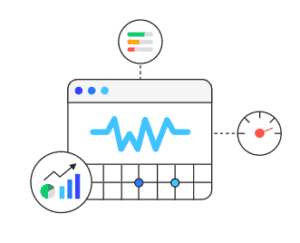Google Web Vitals Impact SEO
 Google announced a new set of citeria to encourage a positive user experience for web users. These new criteria will impact how a site ranks for Search Engine Optimization efforts. The new factors are:
Google announced a new set of citeria to encourage a positive user experience for web users. These new criteria will impact how a site ranks for Search Engine Optimization efforts. The new factors are:
- Largest Contentful Paint (LCP): measures loading performance. Basically the time it takes for a page to load sufficiently.
- First Input Delay (FID): measures interactivity. Basically how long someone takes to click something on your website.
- Cumulative Layout Shift (CLS): measures visual stability. How much does the page shift around when people use the site.
These new factors are really about making sure websites are showing people information that is helpful, useful, relevant, and doesn't shift or switch up on people.
Google has a short list of tools that you can use to see if your website is performing under these new guidelines. I posted the link so you can learn more about these new Web Vitals.
What does Web Vitals mean for Search Engine Optimization?
It means that user experience is gaining more ground for determining if a website is a viable option for search results. It's not replacing the foundations of SEO work, but it is placing more emphasis on what we call Good code. If your website is coded properly it should remedy the page loading speed and the shifts in your website while users use the site.
These are not new requests
These new factors are part of the process Google seeks to perfect, creating a perfect website experience from the time you start on their website, to whatever website they send searchers.
What does this mean for website owners?
You have to setup up your game one more time. The page loading speed has always been a requirement to load as quickly as possible. This new factor will require a little more attention to the size of images, which includes are loading, and other factors that slow a site down. The good news is there are solutions to improve page loading speed.
- Fix large file issues - Replace with smaller file sizes.
- Reduce Includes that use material from other sites to load content. - Weigh the cost/benefit of borrowing information from other sites.
- Focus on User Experience
- ID your target users and figure out where they should be clicking on your website.
- Take account of different users along the buying spectrum.
- Take account of users from the different parts of the sales funnel.
- If you use a content management system, check to see what tools they have to improve loading speed.
- Depending on how fierce the online competition is, you may want to consult with a UX designer to address the usability of your site.
LINK: Test your site on Page Speed Insights
LINK: Test Multiple Pages on Bulk Core Web Vitals (Experte.com)
Speak with your website developer to talk about these new factors and what you will do to address these needs.
If you need help or have questions we are always here for a consultation or you can ask me a quick question: joshuam@cthinkgroup.com
Ready to find out more?
We can help audit your code to test for factors that may integrate with your SEO efforts. Contact us for a report.
Our Shameless Plus
We run a Code Audit SEO report that includes page loading speed as part of the report. It also can provide details on how to remedy these issues. If you are interested in having us take a look please contact us with the link above.

Senior-level SEO consultant that enjoys helping businesses learn how to SEO their website since 2007. I have over 20 years of experience helping business owners realize their goals through process development, data-driven decision-making, and simplifying complex processes.
